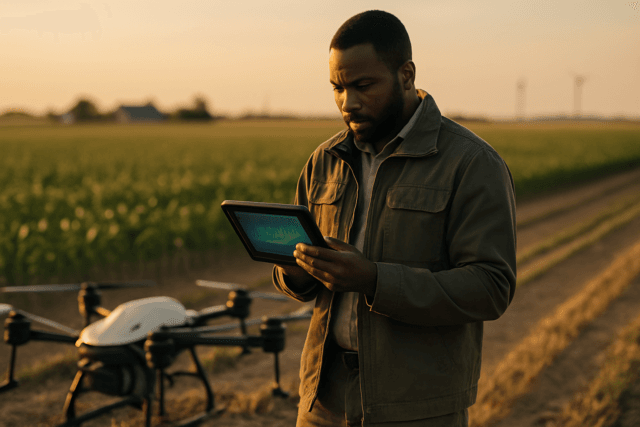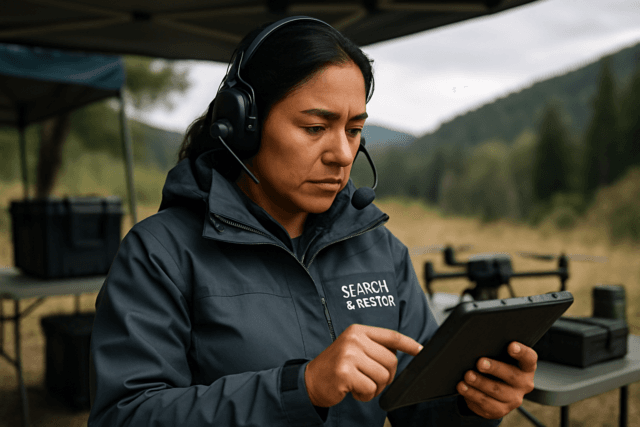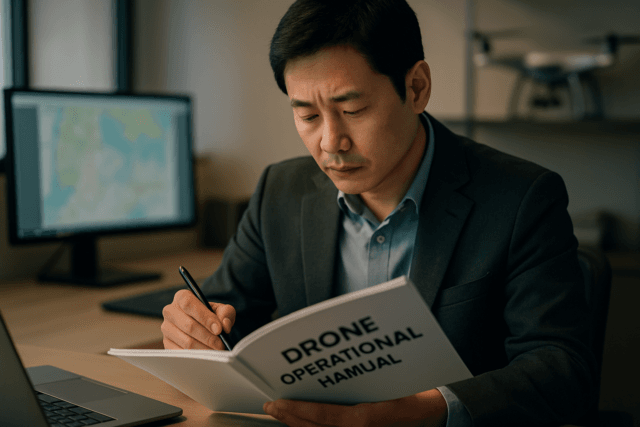The agricultural landscape is undergoing a profound transformation, with Unmanned Aerial Vehicles (UAVs), commonly known as drones, emerging as indispensable tools for precision agriculture. These high-flying workhorses offer unprecedented capabilities for crop monitoring, soil analysis, livestock management, and targeted resource application, promising increased efficiency and yields. However, this rapid adoption of technology, particularly the collection and transmission of vast amounts of sensitive agricultural data, introduces a new frontier of cybersecurity risks that demand urgent attention.
The Rise of Drones in Agriculture and Data Dependence
Agricultural drones are equipped with advanced sensors, including multispectral, thermal, and RGB cameras, to collect high-resolution data over farmland. This data provides farmers with real-time insights into crop health, soil conditions, pest outbreaks, and irrigation efficiency, enabling data-driven decision-making. The seamless integration of drones with IoT (Internet of Things) systems, AI analytics, and cloud-based platforms has made farming more precise and productive than ever before. Yet, this interconnected ecosystem inherently broadens the attack surface, creating vulnerabilities that could jeopardize critical agricultural operations and sensitive information.
Key Cybersecurity Risks of Agricultural Drone Data
The proliferation of drones in agriculture has brought a myriad of cyber threats, ranging from data manipulation to direct operational disruption.
Data Integrity and Manipulation
The accuracy and trustworthiness of agricultural data are paramount for effective decision-making. Cybersecurity threats can compromise this integrity, leading to severe consequences:
- False Data Injection: Malicious actors could inject falsified data into drone systems or farm management platforms, leading to inaccurate assessments of crop health, soil conditions, or pest infestations. This could result in suboptimal resource allocation, incorrect treatment applications, or delayed pest detection, causing significant crop damage and financial losses.
- Inaccurate Decision-Making: If farmers rely on compromised data for critical operations, it can lead to inefficient practices, wasted resources, and ultimately, reduced yields.
Data Privacy Concerns
Agricultural drones collect highly detailed information about a farm’s operations and potentially surrounding areas. This raises significant privacy concerns for farmers and nearby residents.
- Sensitive Farm Data Exposure: Data such as crop yields, soil conditions, livestock movements, and proprietary farming techniques are valuable to competitors or malicious entities. Unauthorized access to this information could lead to competitive disadvantages or economic exploitation.
- Violation of Personal Data and Privacy: Drones equipped with cameras can capture images of private property, leading to concerns about invasion of privacy. In some cases, farm data may inadvertently include personally identifiable information (PII), bringing it under broader data protection regulations like GDPR, though agricultural data often falls outside these scopes.
- Data Ownership Ambiguities: The legal landscape around data ownership in precision agriculture is complex, with multiple stakeholders including farmers, agricultural technology providers (ATPs), and equipment manufacturers involved. Many contracts may grant extensive control over farm data to technology providers, sometimes without farmers fully understanding the implications.
System and Communication Vulnerabilities
The technological components of agricultural drone systems present numerous entry points for cyberattacks.
- Hacking and Unauthorized Access: Drones, especially through their Ground Control Systems (GCS), can be vulnerable to hacking. An attacker gaining unauthorized access could steal data, send malicious commands, or even hijack the drone itself for harmful purposes like spying or disrupting operations.
- Denial-of-Service (DoS) and GPS Spoofing: DoS attacks can flood drone systems or communication networks, making them unresponsive and causing operational downtime. GPS spoofing can mislead drones about their location, leading to a complete loss of control, misapplication of inputs, or even crashes, severely impacting modern farming practices that rely on precise positioning.
- Malware Injection and Botnets: Drones can be susceptible to malware or viruses. A “botnet drone” could allow malicious actors to hijack drones, leading to a loss of control, use them for spying, or disrupt their functions. Botnets can also intercept data transmitted between drones and farm management systems.
- Weak Authentication and Communication Protocols: Many IoT devices, including those integrated with drones, are resource-constrained and may lack robust encryption and authentication mechanisms, leaving them vulnerable to network-layer attacks and unauthorized access. Unencrypted radio signals used by drones can be intercepted and decoded.
Supply Chain and Third-Party Risks
The interconnected nature of modern agriculture means that vulnerabilities in one part of the supply chain can impact the entire system.
- Third-Party Software and Hardware Vulnerabilities: Agricultural technology often relies on components or software from various vendors. Vulnerabilities within these third-party elements can expose the entire system to risks like remote code execution or privilege escalation.
- Reliance on Agricultural Technology Providers (ATPs): Farmers increasingly rely on ATPs for data analysis, cloud storage, and other crucial services. If these providers suffer a data breach or cyberattack, farmers’ sensitive information can be compromised. Discussions around foreign-manufactured drones also highlight potential national security and espionage risks within the supply chain.
Broader Implications of Compromised Agricultural Drone Data
The consequences of successful cyberattacks on agricultural drone data extend far beyond individual farm operations.
- Economic Losses and Food Security: Cyberattacks can lead to significant financial losses due to crop damage, disruption of critical farming operations, and increased operational costs. In a worst-case scenario, widespread attacks could jeopardize food security by disrupting the agricultural supply chain and food production systems.
- Loss of Trust and Competitive Advantage: Incidents of data breaches or system compromise can erode trust in digital farming technologies, discouraging further adoption of beneficial innovations. The theft of proprietary data or farming strategies can also lead to a loss of competitive advantage for individual farmers or agricultural businesses.
Mitigating Cybersecurity Risks in Agricultural Drone Operations
Addressing these complex cybersecurity challenges requires a multi-faceted and proactive approach across various levels.
Robust Security Protocols and Technologies
- Encryption and Secure Access Controls: Implementing strong encryption for data both at rest and in transit is crucial to protect sensitive information from unauthorized access and breaches. Robust access control measures are essential to maintain operational integrity and verify the authenticity of drone commands and data.
- Strong Authentication Mechanisms: Beyond simple passwords, multi-factor authentication and other strong protocols are vital to prevent unauthorized access to drone control systems and data platforms.
- Intrusion Detection Systems (IDS): Deploying network-based and host-based intrusion detection systems can help monitor activities and identify suspicious behavior within agricultural IoT networks.
Regular Security Audits and Updates
- Continuous Monitoring and Vulnerability Assessments: Regular security audits, penetration testing, and continuous monitoring of drone systems and associated IT infrastructure can identify and address vulnerabilities before they are exploited.
- Firmware and Software Updates: Ensuring that drone firmware, ground control software, and integrated IoT devices are regularly updated with the latest security patches is critical to protect against known vulnerabilities.
Secure Supply Chain Management
- Vetting Third-Party Providers: Farmers and agricultural businesses should carefully vet agricultural technology providers and understand the data control provisions in their contracts.
- Focus on Regulated Parts: Policymakers and industry stakeholders may consider focusing regulations on specific, critical technologies within a drone rather than the entire product, placing the onus on manufacturers of regulated parts to perform supply chain analysis for security risks.
User Education and Awareness
- Cybersecurity Training: Educating farmers and drone operators about common cyber threats, secure operational practices, and the importance of strong passwords is a fundamental step in building resilience against attacks.
- Incident Response Planning: Developing clear incident response plans can help minimize the damage and recovery time in the event of a cyberattack.
Evolving Regulatory Frameworks and Industry Standards
- Developing Comprehensive Legal Frameworks: There is a recognized need for a universal legal framework that clearly defines data ownership and ensures fair data-sharing practices in agriculture.
- Industry-Specific Standards: The development and implementation of industry-specific cybersecurity standards and best practices tailored to the unique needs and challenges of the agricultural sector are paramount. Some regions are already introducing detailed registration and flight notification protocols for agricultural drones to balance technological advancement with national security and privacy.
As precision agriculture continues to advance, the symbiotic relationship between technology and farming demands equally advanced cybersecurity measures. Proactive strategies, robust technical safeguards, strong regulatory frameworks, and continuous user education will be essential to ensure the integrity, privacy, and availability of agricultural drone data, safeguarding both food production and the livelihoods of farmers worldwide.





